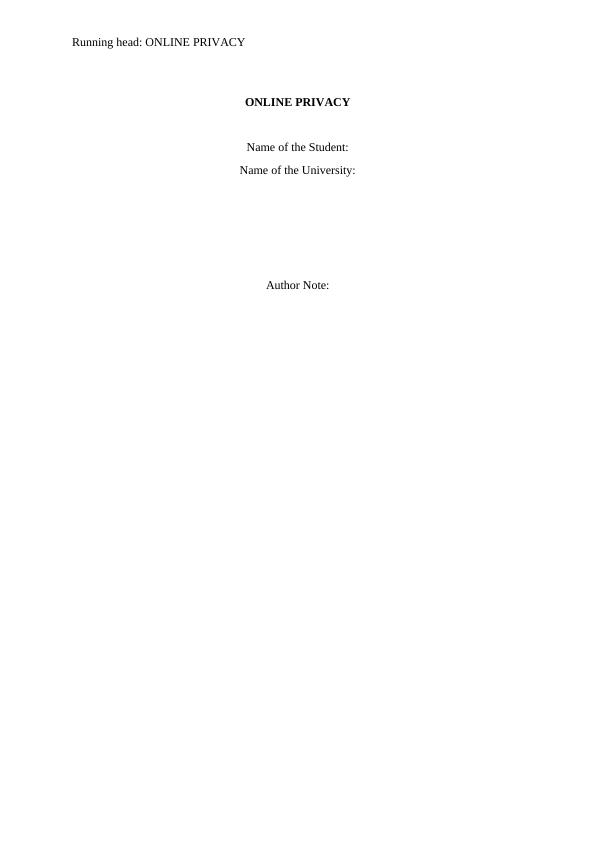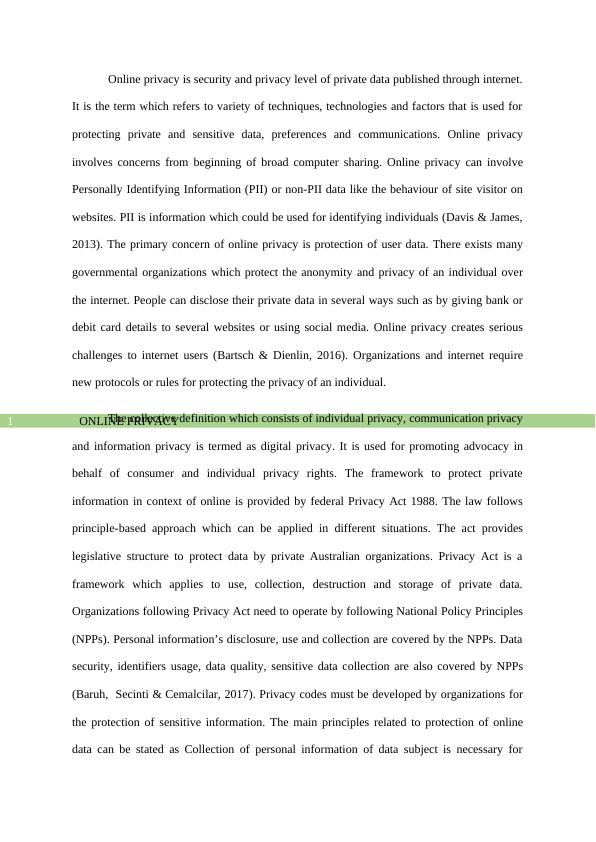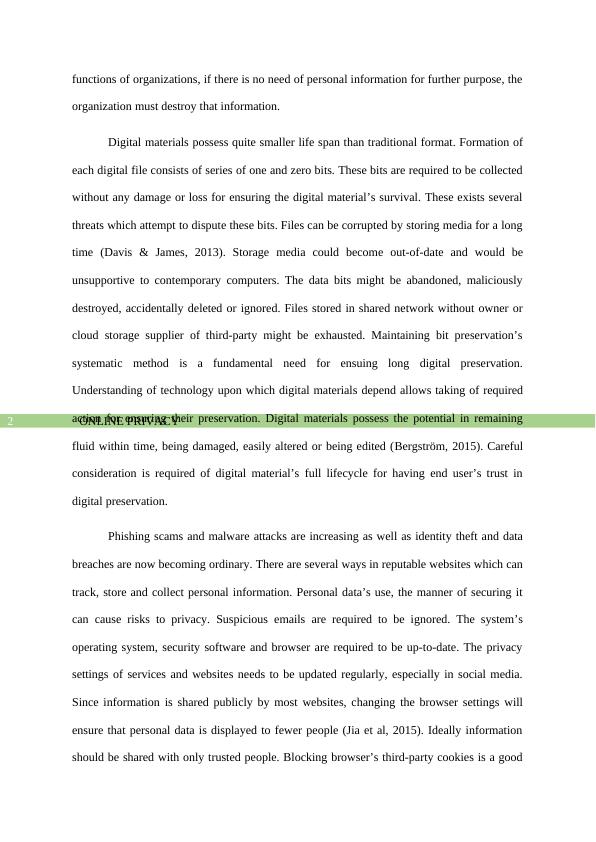Online Privacy: Protecting Your Personal Data and Security
This assignment requires a 1500-word analytical essay on online privacy, focusing on IT privacy concerns, research skills, referencing, and writing an opinion piece.
8 Pages2203 Words260 Views
Added on 2022-11-25
About This Document
This article discusses the concept of online privacy, including the protection of personal and sensitive data, as well as the challenges and risks associated with online privacy. It explores various techniques and measures to safeguard online privacy, such as using secure passwords, updating software, and utilizing virtual private networks (VPNs). The article also highlights the role of organizations and governments in ensuring data privacy and the differences between privacy laws in Australia and the European Union.
Online Privacy: Protecting Your Personal Data and Security
This assignment requires a 1500-word analytical essay on online privacy, focusing on IT privacy concerns, research skills, referencing, and writing an opinion piece.
Added on 2022-11-25
ShareRelated Documents
End of preview
Want to access all the pages? Upload your documents or become a member.
Cyber Intelligence Sharing and Protection Act
|6
|1944
|44
The information law and society
|14
|3253
|21
Online Privacy
|9
|2065
|55
Confidentiality and Data Protection Act of 2018 in Healthcare Settings
|5
|1879
|457
Online Privacy - Issues of Digital Privacy
|9
|2330
|17
Online Privacy
|9
|2210
|93



